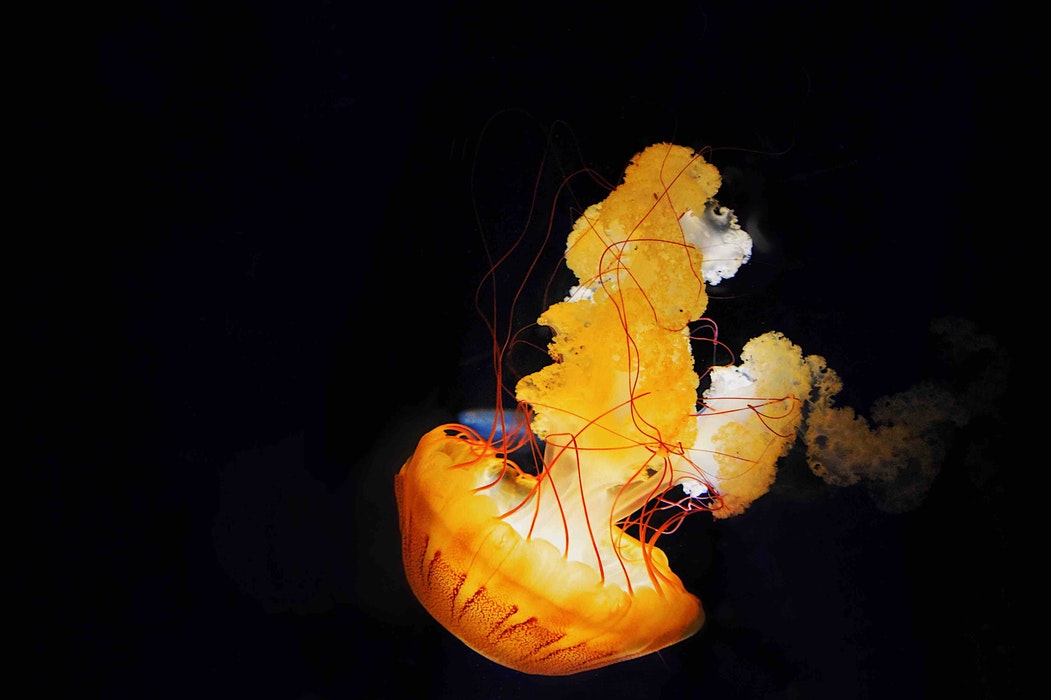What to do if you get stung by a jellyfish

Under certain weather conditions, especially after heavy rains and strong winds, the slippery creature known as the jellyfish arrives in the waters close to the shore where it becomes a real nightmare for swimmers. It’s not like they are particularly mean and dangerous (at least not all of them), but the experience of being stung by a jellyfish is not pleasant at all and can even be extremely painful. They are usually difficult to spot in the water, and swimmers get stung by coming into contact with the jellyfish’s tentacles. Here are some useful facts and tips that will help you prevent or cure a jellyfish sting.
Common Symptoms

Jellyfish stings have common symptoms that you will recognize right away if you ever suffered it.
- Pain
- Burning
- Swelling
- Redness
- Bleeding
In most of the cases, all the symptoms disappear after only a few hours and all is back to normal. But there are cases of people that are allergic to the sting having a pretty difficult time in overcoming the pain and swelling. In those cases, visiting a doctor is absolutely necessary.
What to do if you get stung by a jellyfish

If you are the unlucky swimmer that gets stung by a jellyfish, everybody around you will know it. The feeling is unbearable, and that’s a fact. When you feel the pain, get out of the water immediately to avoid being stung again from another jellyfish nearby.
- Clean the whole area of your body affected by the sting.
- Use a saline solution or sea water to clean the area. Avoid regular water because it can break the stinging cells and thereby cause more pain.
- There are people that recommend applying something cold to the injury, and others who prefer hot wraps. Both methods work well. Whatever you choose, do it for 15 minutes to calm your skin.
- In many cases the jellyfish tentacles stay on your skin, and it’s important to remove all the remains. DO NOT touch them with bare hands because they will still be capable of stinging. Always use gloves or tweezers. If none of these are available at the time for you, then run to the closest beach bar and ask for a straw or grab any stick you can find in the sand.
- Apply an antihistamine to your skin to calm the pain and lower the blisters. Go to the local pharmacy, tell them what happened to you, and they will give you what you need. Taking an anti-allergy pill is also an option as the jellyfish sting is toxic.
- Do not scratch the injury or rub it with a towel, you will only make it worse.
- Hot sand helps to calm the skin once you’re out of the water, but it needs to be really hot, and you should just apply it gently, not rub it.
Prevention

It’s always good when you can actually prevent something from happening and thereby avoid all the trouble.
- Look out for flags that warn you of jellyfish in the water. Also, check the weather forecast and don’t go into the ocean if it was raining hard the day before.
- Don’t touch any jellyfish washed up on the shore and make sure you keep your kids away from it.
- If you live somewhere where jellyfish are not seasonal but they simply live there throughout the year, then use a cream that will protect you from the stings. The cream works in a way that causes jellyfish tentacles to slip over your skin, and it confuses the sensors in the stinging cells.
No matter what you do and which beach you visit, be extremely careful and take care of yourself. Good luck!
If you have any comments then please drop us a message on our Outdoor Revival Facebook page
If you have a good story to tell or blog let us know about it on our FB page, we’re also happy for article or review submissions, we’d love to hear from you.
We live in a beautiful world, get out there and enjoy it. Outdoor Revival – Reconnecting us all with the Outdoors.
